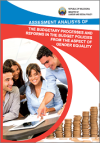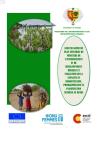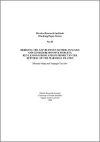FUNDAR 106
This paper by the Commonwealth Secretariat (1999) provides a rationale for the strategic goals of the Commonwealth Gender Budget Initiative at the national level and highlights the need for integrating a gender perspective in macroeconomic policies and budgets.
This paper attempts to briefly examine the level of readiness/preparedness of Pacific Island countries (PICs) to advance the process of incorporating gender-responsive budget initiatives into national policies and public expenditure management systems.
The main goal of the Albanian Time Use Survey is to develop nationally representative estimates of how people divide their time of various life activities. The main objectives to be achieved through the time use survey were:
The subject of this analysis is the budget process in the Republic of Macedonia (RM), with emphasis on the reforms of budget policies in terms of gender equality and determining entrance points for integration of the gender into the budgeting process.
The purpose of this manual is to provide public officials working on gender budget analysis a simple tool on how to carry it out.
The guide brings together and synthesises several innovative and tested strategies on gender responsive planning & implementation from across India.
Knowing the economic costs of the activities of state institutions is necessary for budgeting addressing the implementation of the legislation against domestic violence.
This study was conducted as part of the overall program, "Increasing accountability in financing for gender equality" (F4GE), undertaken by UN WOMEN, with the financial support of the European Commission and the Government of Spain.
The study aimed also at conducting a gender analysis of the sector plan of the Ministry of Water and Sanitation. It aims also at assessing the capacity of the staff on gender sensitive budgeting, programming and planning.
This paper examines a GRB pilot project undertaken in the small Pacific country of the Republic of the Marshall Islands (RMI).







